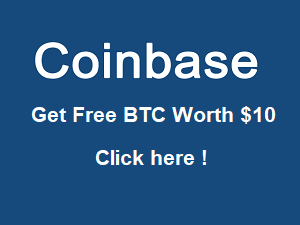
The DeFi boom and search for projects offering interoperability recently sent Ren’s price and total value locked to new all-time highs.
Interoperability between blockchains is rapidly becoming one of the buzz phrases being thrown around when discussing decentralized finance and the coins most likely to rally during an altcoin bull run.
The rapid growth of DeFi, its ever expanding total value locked and soaring ETH gas fees further highlight the sector’s need for a layer 2 option that also supports the ability to transact value across different networks.
REN’s open protocol is designed specifically to fill this need by providing interoperability and liquidity between the top blockchains including Bitcoin, Ethereum and Zcash.
Over the past three weeks the price of REN has increased by more than 200%, going from $0.251 on Dec. 27 to a new all-time high of $0.778 on Jan. 20 driven by a record $369 million in 24-hour volume.

Three reasons for the recent price surge in the price of REN include the announcement of a collaboration with Google, the continued increase in total value locked on the platform and the ability to earn passive income in multiple cryptocurrencies through the operation of a darknode.
Google software pivot boosts sentiment, addresses RENvm scaling issues
On Jan.19 the REN team tweeted:
Ren has been researching & building on @Asylodev, an open and flexible framework by @Google. @GCPCloud confidential computing relaxes RenVM’s economic constraints, allowing for an unbounded scaling solution. #RenVM.”
Not long after the tweet, REN price began to rally to a new all-time high. As mentioned in the tweet, Asylo is an open and flexible framework from Google designed to help build portable applications that run on Secure Enclave hardware.
The secure enclave hardware allows users to run general-purpose applications in a secure environment where both the data, and the application itself, cannot be compromised by anyone, including the user. This makes for a more secure experience for all parties involved and helps protect against malicious code and backdoor attacks.
Asylo also makes it possible to port an application from one type of hardware to the next, meaning that developers can support multiple implementations with relative ease, including Intel implementations, AMD implementations, and any others that appear in the future. The diversity of choice this allows is an important feature to ensure decentralization on the network.
Total value locked soars to a new high
Community engagement and added value are key factors when it comes to the long-term success of a blockchain project.
Since the release of the Ren virtual machine mainnet (RenVM) in May 2020, engagement on the platform has steadily increased as Bitcoin holders now had another way to bring their BTC to Ethereum and the growing DeFi space.
As seen in the chart below, the total value locked on the Ren platform reached a new all-time high of $653.6 million on Jan. 20 and a total of 14,670 BTC are locked on the platform to create renBTC.

The list of assets that RenVM supports continues to grow with BTC, Bitcoin Cash (BCH), Zcash (ZEC), Filecoin (FIL), Terra (LUNA), Dogecoin (DOGE) and Digibyte (DGB) currently available to transact on the Ethereum and Binance blockchains.
Development is currently underway to make it possible to interact on the Polkadot (DOT), Solana (SOL) and Cosmos (ATOM) networks as well, which would further enhance the interoperability provided.
Darknodes, passive income and a decreasing supply
The third driving force behind the recent price appreciation of REN relates to the Ren token use case and how it can help users earn passive income. RenVM is a network of virtual computers that make up a virtual machine, which are also referred to as Darknodes.
REN token holders who wish to operate a darknode need to lock up 100,000 REN which wiil enable them to process transactions on the network and earn a fee in the form of the token transacted. Thus, a darknode operator has the opportunity to earn passive income in the form of multiple different cryptocurrencies from one location.

As can be seen in the above graphic, 17.13% of REN’s total supply is currently bonded on the platform and supports the operation of darknodes.
During the most recently completed cycle, the network as a whole earned $839,128 in fees in the form of BTC, ZEC, FIL and BCH. The total network fees collected since the launch of the RenVM equals $2.975 million.
The continued addition of new tokens and interoperability with new blockchains will likely see increased usage of the network and an increase in the amount of fees earned. At the current price of $0.6157 it costs $61,570 to operate a darknode.

As activity on the network increases, the amount of fees generated will also increase, making it even more lucrative for token holders to operate a darknode. This has the potential to lead to further price appreciation from REN as every new darknode results in a direct decrease in its circulating supply.
The views and opinions expressed here are solely those of the author and do not necessarily reflect the views of Cointelegraph.com. Every investment and trading move involves risk, you should conduct your own research when making a decision.
[…]
Learn more









Leave a Reply